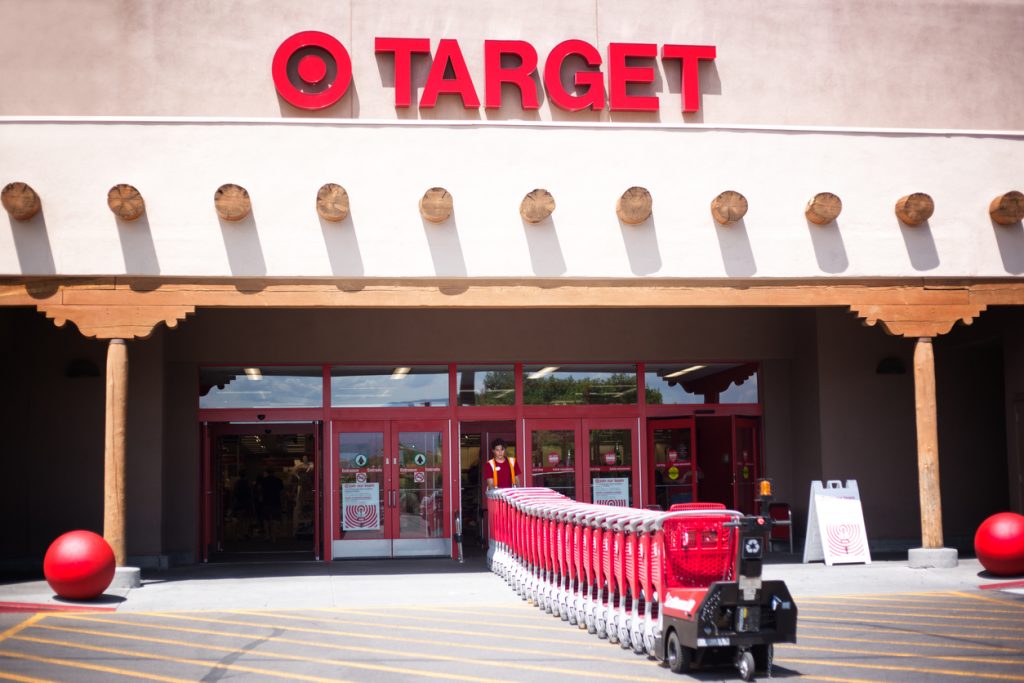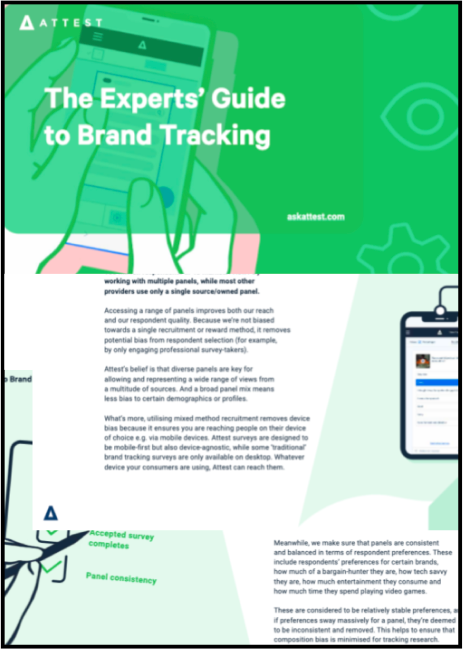Brand repositioning: 6 steps (+ how to know when you should)

It’s one thing to build a brand. It’s another thing to ensure that your brand captures the attention of your desired audience, consistently.
In today’s fast-paced business world, companies need to constantly seek out new ways to stay relevant and competitive. One effective strategy for achieving this is through brand repositioning.
Brand repositioning is the process of revising brand pillars and modifying them to better suit the market and the desires of your audience–while maintaining brand identity. The aim of brand repositioning is to change the brand perception your target customers have by adjusting marketing strategies around factors such as price, product changes, and messaging.
This is not a complete brand overhaul, or (gasp!) a rebrand. It’s about making meaningful adjustments to keep up with changing consumer tastes and preferences. Want to know more?
Here we’ll dive into the nitty gritty of brand repositioning and how to adapt as needed.
When should you consider a brand repositioning strategy?
Brand repositioning in business is inevitable and it happens for different reasons. The markets are constantly changing, trends keep popping up, and consumer needs and preferences are always evolving.
Sometimes the need to reposition isn’t entirely external. It becomes necessary when a product or service doesn’t perform as well as you envisaged, a product is of poor quality, or if you targeted the wrong audience.
Here are some reasons you should consider brand repositioning:
- Targeting a new audience: Looking to expand into new markets or introducing a new product for a different target market? You’ll need to consider how these new audiences will respond to your current brand and adjust your messaging accordingly.
- Competitors are consistently outperforming you: Brand repositioning is a good way to redefine your unique value proposition and stay ahead of companies with a competitive advantage.
- Significant market changes: Consolidate your brand position when new competitors come onto the scene or new tech and trends shake up the market.
- Releasing new or adapted products: Ensure your existing brand personality and message aligns with your new offerings.
- Attract younger generations: To stay relevant it’s important to appeal to young and future consumers. This might mean repositioning your brand and adapting marketing efforts.
Make sure your brand is turning people into customers
See our list of the top 20 questions brand managers should ask their customers- before making big changes!
See the top brand questionsHow to reposition your brand and come out on top
Brand repositioning is a big job, but well worth it to ensure the longevity and success of your brand. Here we outline six key steps to achieving a successful new brand position and the tangible benefits you could see as a result.
1. Identify your existing brand position
You can’t decide where to go next if you don’t know where you are now. It’s important to understand your brand’s current position before making any drastic changes. Find out how consumers currently perceive your brand so that you know exactly where to focus your brand repositioning work.
This phase involves consumer and brand perception research to identify:
- Who your current target audience is
- Existing customer perception
- Current brand awareness
- Your top competitors
- Your brand’s market position
- Your strengths and weaknesses
Get started straight away with our brand perception survey template and find out what consumers think about your brand and use the insights to guide your brand repositioning strategy.
2. Conduct market and audience research
You’ve identified existing brand perception but where do you go from there? One of the most fatal actions a company can make is creating a marketing strategy based on assumptions.
Market research is vital to identify the current state of your market for tangible repositioning. Effective research will give you insight into where new opportunities lie, your target market’s needs and preferences, and the state of your competitors.
There are plenty of market research tools and methods available to help you conduct surveys, interviews and behavioral research to make data-driven decisions.
Creating the right surveys for your audience is challenging, however, we’ve made things easier for you and we’ve provided the top brand positioning questions you need to ask.
Position your brand effectively with the right consumer insights
Making sure your brand is well-positioned is key to your success—that’s where research comes in! We’ve narrowed it down to a list of 16 key brand positioning questions you need to ask.
See the list3. Define your new brand position
The results from the market and consumer research coupled with the internal checks you’ve carried out will help you define your brand’s new position. Assessing the strengths, weaknesses, opportunities, and threats of your brand is key at this point.
When you’re defining your brand’s new position, it doesn’t necessarily mean that your brand is failing and it needs a total overhaul. Avoid making sweeping changes in a knee-jerk reaction and use the data you’ve collected to redefine your unique value proposition and maximize opportunities.
4. Develop a brand positioning strategy
You’ve figured out the who, what, and why. Now it’s time to action the how. Your brand strategy defines how you will communicate your new brand positioning to your target audience.
A new brand strategy goes down to the roots: it’s all about making changes in your brand messaging, the platforms you use, your visual identity, and marketing campaigns.
Your brand strategy, while being comprehensive, will be determined by the driving factors that led to a need for repositioning in the first place.
5. Craft a compelling story around brand identity
This is the part that most brands forget about. A brand story is the key to the heart of your audience. It is the means through which you make a strong emotional connection with your target market.
We’ve heard a thousand and one times that most buying decisions are made from a place of emotions and are justified with logic. Crafting a compelling brand story around your new brand positioning is an effective way to communicate the ‘new you’ to your market.
Your brand story should be at the root of your content, social media posts, landing pages, and communication channels.
6. Listen, analyze and adapt
The work is far from over after you’ve launched your new brand strategy. You need to monitor the successes and failures of your brand repositioning and make adjustments as necessary.
Listen to your customers, ask for feedback, and dig into how your new positioning has landed. You can do this by tracking metrics such as sales and brand awareness and gathering customer feedback at every stage of implementation.
Continuously analyze the results of your repositioning strategies using brand tracking and consumer insights studies to ensure that you’re on the right track (and make adjustments to make sure you remain on track/make the most of new opportunities).
3 Successful brand repositioning examples that got it right
Need a little inspiration to set the wheels in motion? Here are a few companies that repositioned their brand effectively, adapting to new market trends and audiences.
Burberry: from stigmatized image to luxury fashion
Burberry is a high-end British fashion brand. What started as a celebrated fashion brand in the world became a brand at risk of total annihilation due to a declining brand image. They spotted a drastic decrease in revenue as the result of brand perception and image problems.
In the early 2000s, Burberry implemented a brand repositioning strategy to overhaul its product and messaging. With a new creative director on board, they modified their designs and pricing and cut back their signature checked patterns in favor of high-quality material and vibrant colors.

The brand revamped marketing campaigns and enlisted supermodel Kate Moss to reiterate its new visual identity and upscale image.
Burberry is now considered a luxury fashion brand for celebrities and sits atop the crème de la crème of British apparel.
Target: from discount store to affordable quality
Target’s brand repositioning was focused on competing with one of the biggest names on the playing field—Walmart. Originally seen as a discount store for low-priced goods, Target figured out that to compete with Walmart they would need to position the brand as a more upscale retailer.
From this brand repositioning comes the well-known slogan, ‘Expect More, Pay Less.’ They coupled this with lower prices, exclusive product lines, designer collaborations, new customer loyalty programs and a revamp of physical stores to improve customer experience.

These initiatives resulted in a successful repositioning of Target as a stylish and high-quality brand with affordable prices.
Apple
232 million iPhones, 61 million iPads, and 26 million Mac and MacBook units were sold in 2022. Those are huge numbers for a brand that started out as primarily a computer company.
In the early 2000s, Apple identified opportunities in the emerging smartphone market and grabbed the chance to reposition the brand in a way that defined the iPhone as a lifestyle product rather than only a technological device.
With this strategy, Apple positioned itself as a lifestyle brand that designs products that integrate seamlessly into people’s lives. The repositioning initiatives focused on user experience, ease of use, and attractive design. The result? Apple now appeals to almost everyone, rather than the tech enthusiasts that were its original audience.
Burberry, Target and Apple do it—why don’t you?
If it’s good enough for them… Some reliable brand tracking will give you much-needed direction for your brand repositioning.
Get started with our templateBenefits of repositioning your brand
Not quite convinced? Some of the biggest brands in history have had to implement a brand repositioning strategy to survive, and with it came a lot of benefits. Here are just a few:
- Differentiation from the competition
- Maintained relevance
- Increased revenue and sales
- Enhanced brand awareness
- Improved brand loyalty
- Appealed to a wider audience
Brand repositioning—a stronger identity
Brand repositioning may sound scary, but it does wonders to strengthen a brand’s identity when you do it right. Repositioning your brand doesn’t have to send cold chills down your spine (or your CFO’s spine for that matter), it can be as simple as tweaking your messaging or focusing on image repositioning.
Ready to get started? Dive into your brand perception and health—your first survey is on us!
Frequently Asked Questions
Brand Repositioning is the process of revising your brand pillars and modifying them to better suit the market and the desires of your audience–while maintaining its core identity. It is the changes you make to your brand perception when the market signals suggest that it’s time to do so.
There are two vital tools to assist your brand repositioning strategy.
– Customer surveys: Gather feedback and data for market research using customer surveys. Consistently track your brand to understand perception and awareness at all stages of repositioning.
– Market research tools: There are plenty of solutions available to conduct effective market research, automate processes and analyze results. Find out how you can track your brand’s health and performance with Attest.
A lot of people think they’re the same thing. Well, not so fast. They have similar concepts but they’re not the same thing.
As the name implies, brand repositioning is the process of altering your brand’s perception while rebranding is the process of a total overhaul including brand identity. Rebranding often involves changing the brand’s name, logo, colors, typography and other visual elements, while brand repositioning might only change aspects of these, or might introduce new branding stories and elements to promote the updated positioning.
Tell us what you think of this article by leaving a comment on LinkedIn.
Or share it on:

